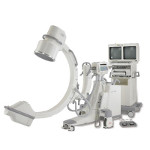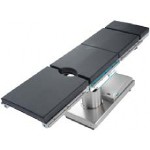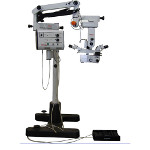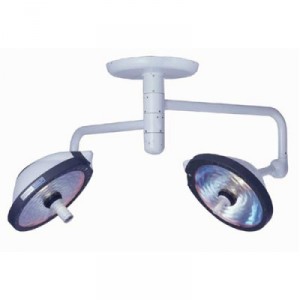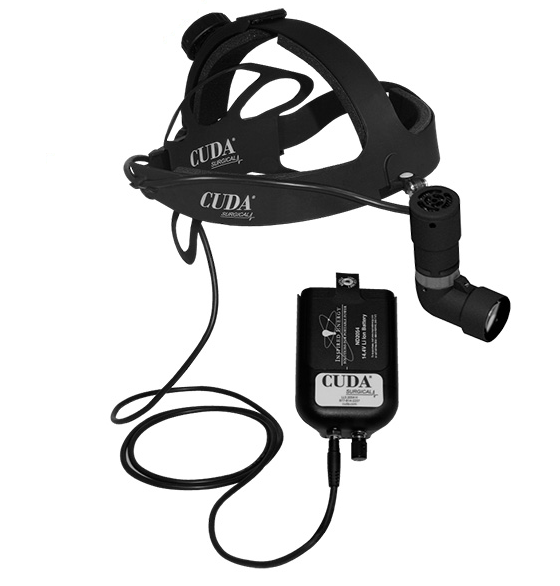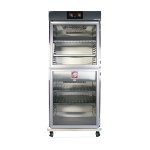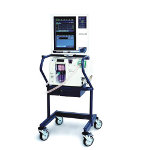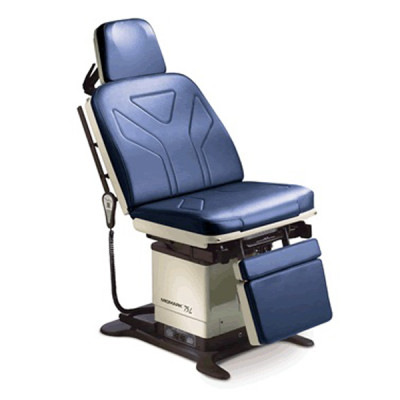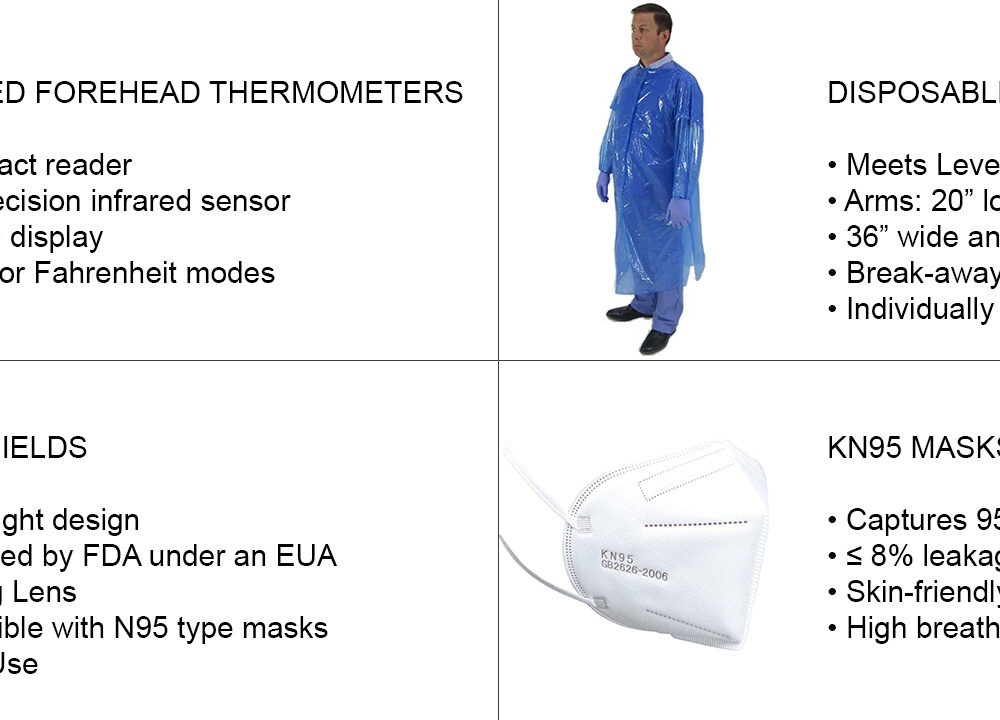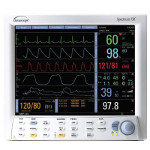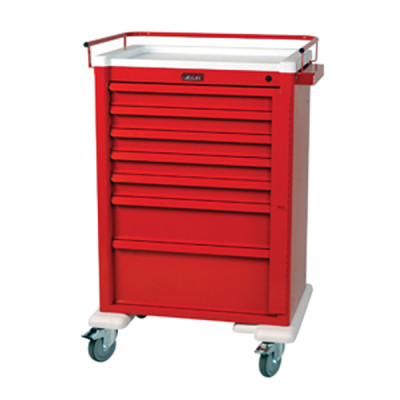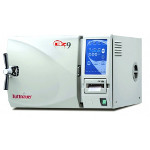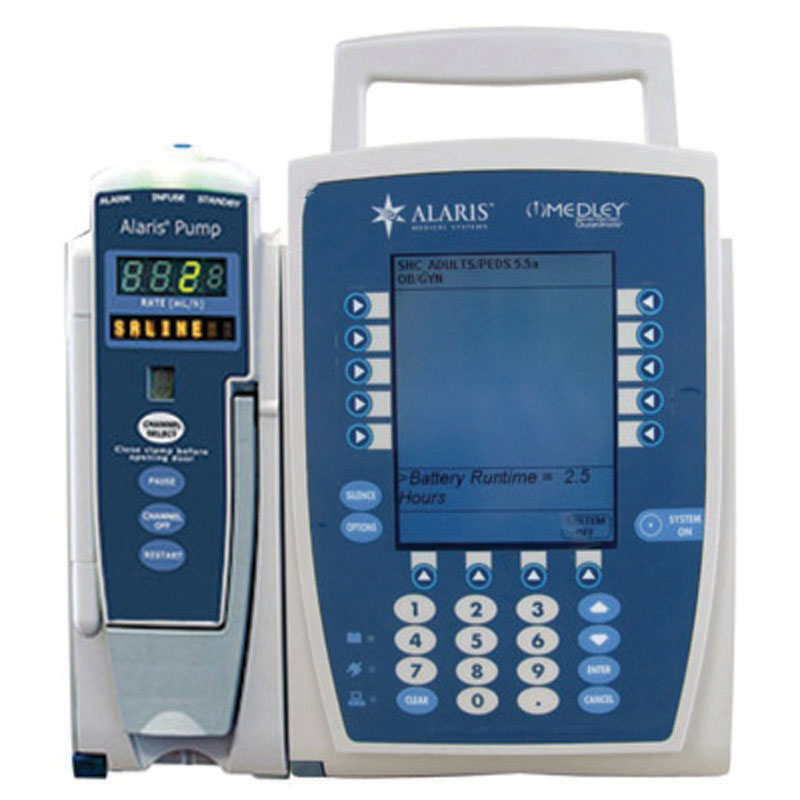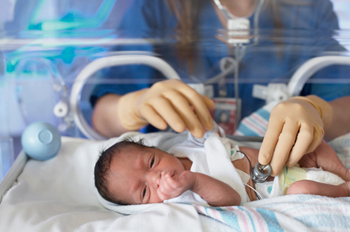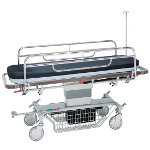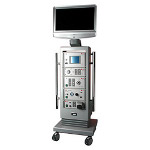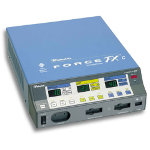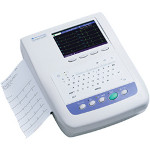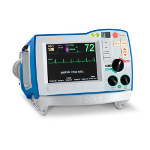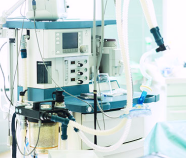Our focus is helping hospitals and healthcare facilities provide safe work environments.
In an effort to increase hospital safety and reduce hospital liability from hazardous gases found in the work place, Heartland Medical provides a variety of monitoring services formatted to meet OSHA, NIOSH, HFAP, AAAHC, and JCAHO requirements.
The General Duty Clause requires employers to furnish to each of his employees, employment and a place of employment which is free from recognized hazards that are causing or are likely to cause death or serious physical harm to his employees. Our focus is helping hospitals and healthcare facilities provide safe work environments for their employees and visitors. We achieve this by providing monitoring services and products that satisfy the facility accreditation (i.e. JCAHO, HFAP, AAAHC) requirements. OSHA, NIOSH and other overseeing agencies set the foundation to our testing protocols.
Waste Anesthetic Gas Monitoring Services
Nitrous Oxide (details on high and low pressure leakage) All Halogenated Gases Ventilation (air exchange rates / pressure) Vacuum flow check at scavenging interface All ancillary locations: Hallways, Control Desk and Recovery Room Provide option on live or simulation analysis Follow current state and federal regulations
PURPOSE
To minimize employee exposure to waste anesthetic gases by evaluating scavenging systems and engineering controls. To format monitoring results to satisfy the requirements and recommendations set forth by OSHA, Department of Labor, NIOSH, JCAHO, and insurance companies that offer liability coverage. To utilize testing results as a basis for making appropriate recommendations aimed at reducing employee exposure. This WAGs management program, following the guidelines of NIOSH Publication 77-140, test the effectiveness of systems designed to reduce employee exposure to WAGs. Trace gas contamination is usually the result of five main factors: High & Low pressure leakage Scavenging system malfunction Work practice control Improper ventilation Temperature & Humidity check
PROTOCOL
An infrared gas analyzer (Foxboro Miran Sapphire) will be used to make on-site determinations for nitrous oxide and halogenated anesthetic agents (including desflurane and sevoflurane) at the time of anesthetic delivery (Simulated anesthetic delivery will be performed when patient anesthetic delivery is not feasible). On-site monitoring will include average exposure levels in the anesthetist’s breathing zone, measurements of high and low pressure nitrous oxide leakage, assessments of scavenging system effectiveness and proper work practice control measure. Heartland Medical can determine air exchange rates by measuring ventilation supply air flow in locations where the monitoring is performed. A Shortridge flowhood will be used to obtain the air flow measurements. Proper evacuation system flow rates will be determined where room vacuum outlets for scavenging evacuation are utilized.
Ethylene Oxide Monitoring
Onsite real time monitoring for: All gaskets and joints during all stages of operation, door opening and handling practices.
Complete check of the exhaust system and drain. Ventilation (air exchange rates) (supply and exhaust vent diagram) Both short term (STEL) and long term (TWA) dosimeters. Check for proper signage and label (location and wording) Follow current state and federal regulations
PURPOSE
To minimize employee exposure to ethylene oxide gas by evaluating work procedures and engineering controls. To format monitoring results to satisfy the requirements and recommendations set forth by OSHA, Department of Labor, NIOSH, JCAHO, and insurance companies that offer liability coverage. To utilize testing results as a basis for making appropriate recommendations aimed at reducing employee exposure. This management program helps follow the guidelines of OSHA standard publication number, (29 CFR 1910.1047, 29 CFR 1910.134 [b], [d], [e] and [f]), and test the effectiveness of systems designed to reduce employee exposure to ethylene oxide. Trace gas contamination is usually the result of five main factors:
Improper ventilation
Tank / Line / Chamber leakage
Improper work practices
Exhaust system malfunction
Improper aeration
PROTOCOL
An infrared gas analyzer (Foxboro Miran Sapphire) will be used to make on-site determinations for ethylene oxide during the sterilization cycle. Both short and long term personal exposure assessments will be used to meet current federal requirements. Heartland Medical can also determine air exchange rates by measuring ventilation supply air flow in locations where the monitoring is performed. A Shortridge flowhood will be used to obtain the air flow measurements.
Laboratory Gas Monitoring
Pathology, Histology, Cytology, Microbiology, Morgue, Specimen Storage, Surgery and L & D.
Ventilation (air exchange rates and supply and exhaust vent diagram)
Both short term (STEL) and long term (TWA) dosimeters.
Onsite real time monitoring for: Grossing, Specimen Dumping, Tissue Processor Operations, Cover Slipping, Staining, Special Procedures.
Check for proper signage and label (location and wording).
Follow current state and federal regulations
PURPOSE
To minimize employee exposure to formaldehyde and xylene by evaluating work procedures and engineering controls. To format monitoring results to satisfy the requirements and recommendations set forth by OSHA, Department of Labor, NIOSH, JCAHO, and insurance companies that offer liability coverage. To utilize testing results as a basis for making appropriate recommendations aimed at reducing employee exposure. This management program helps follow the guidelines of OSHA standard publication number: (29 CFR 1910.1000 29 CFR 1910.1048, and 29 CFR 1910.134 [b], [d], [e], and [f]), and test the effectiveness of systems designed to reduce employee exposure to formaldehyde and xylene. Trace gas contamination is usually the result of four main factors:
Exhaust system malfunction
Work practice control
Improper ventilation
Engineering controls
PROTOCOL
An infrared gas analyzer (Foxboro Miran Sapphire) will be used to make on-site determinations for formaldehyde and xylene; and in-depth exposure assessments in potentially hazardous work areas such as the Morgue, Processing Room, Pathology, and Gross Room. Both short and long term passive diffusion monitoring badges will be used to meet current federal requirements. Heartland Medical can also determine air exchange rates by measuring ventilation supply air flow in locations where the monitoring is performed. A Shortridge flowhood will be used to obtain the air flow measurements.
Glutaraldehyde Monitoring
Ceiling level readings Full ventilation analysis Check for proper attire and handling practices Check for proper spill response Follow current state and federal regulations
PURPOSE
To minimize employee exposure to glutaraldehyde by evaluating work procedures and engineering controls. To format monitoring results to satisfy the requirements and recommendations set forth by OSHA, Department of Labor, NIOSH, JCAHO, and insurance companies that offer liability coverage. To utilize testing results as a basis for making appropriate recommendations aimed at reducing employee exposure. This management program helps follow the guidelines of OSHA Federal Register, Section 1910.1000,1910.1550, and test the effectiveness of systems designed to reduce employee exposure to glutaraldehyde. Trace gas contamination is usually the result of four main factors:
Improper ventilation
Work practice control
Exhaust system malfunctions
Engineering controls
PROTOCOL
The Lion Glutaraldemeter using state of the art fuel cell technology will be used to make on-site determinations for glutaraldehyde during the handling of cold sterilant solutions. Real time readings will be taken at various source locations, at short intervals of time to provide an integrated personal exposure analysis. Heartland Medical can also determine air exchange rates in problem areas ( areas that have exceeded the glutaraldehyde PEL ) by measuring ventilation supply air flow in locations where the monitoring is performed. A Shortridge flowhood will be used to obtain the air flow measurements.
Vaporizer Verification
Verify calibration of anesthetic vaporizer Provide actual outputs through a range of dial settings Perform calibrations on host anesthesia machines Check for proper function and installation Follow manufacturer� specifications
PURPOSE
To measure the calibration accuracy of anesthetic gas delivery equipment through a range of dial settings based on manufacturers suggested flow rate parameters.
PROTOCOL
Calibrated vaporizers are verified on-site on their assigned machine for proper performance of output. A Riken Analyzer, the preferred system for verification of vaporizer output, is use for this procedure. Written documentation noting actual vaporizer output is completed and left with the hospital.
Indoor Air Quality
Our Indoor Air Quality programs identify and assign proper protocol to monitor unsolicited gases, particles and live organisms such as bacteria and fungi. Due to the infinite range of possibilities toward developing a proper monitoring program, we ask each hospital to contact us directly. Indoor Air Quality programs normally have a higher level of liability, therefore the use of a certified industrial hygienist and the use of laboratories with proper credentialing is normally required.
Acetic Acid Monitoring
Onsite real time monitoring for: All gaskets and joints during all stages of operation, door opening and handling practices. Complete check of the exhaust system and drain. Full Ventilation analysis Check for proper signage and label (location and wording). Follow current state and federal regulations
PURPOSE
To minimize employee exposure to acetic acid by evaluating work procedures and engineering controls. To format monitoring results to satisfy the requirements and recommendations set forth by OSHA, Department of Labor, NIOSH, JCAHO, and insurance companies that offer liability coverage. To utilize testing results as a basis for making appropriate recommendations aimed at reducing employee exposure. This management program helps follow the guidelines of OSHA Federal Register, Section 1910.1000, and test the effectiveness of systems designed to reduce employee exposure to acetic acid. Trace gas contamination is usually the result of four main factors: Improper ventilation Work practice control Exhaust system malfunctions Engineering controls
PROTOCOL
An infrared gas analyzer (Foxboro Miran Sapphire) will be used to make on-site determinations for acetic acid. Real time readings will be taken at various source locations, at short intervals of time to provide an integrated personal exposure analysis. Heartland Medical can also determine air exchange rates by measuring ventilation supply air flow in locations where the monitoring is performed. A Shortridge flowhood will be used to obtain the air flow measurements. Note: Air exchange testing may be skipped in program if PEL levels are found to be well below the action level.
Ventilation Analysis
Check air exchange rates Check pressure levels relative to adjacent room Provide room diagram Follow current state and federal regulations
PURPOSE
To assess ventilation systems and work practice controls effectiveness in minimizing employee exposure to potentially harmful substances.
To utilize testing results as a basis for determining appropriate safety related changes aimed at reducing employee exposure to potentially harmful substances. To format documentation in compliance with current guidelines established by the American Institute of Architects Academy of Architecture for Health and the U.S. Department of Health and Human Services.
PROTOCOL
Heartland Medical can determine ventilation air exchange rates by measuring ventilation supply and exhaust air flow in locations where gases are potentially present. A Shortridge Flowhood will be used to obtain the air flow measurements. Proper positive/negative pressure relations and the recommended air exchange rate for each area of the facility will be evaluated.
Lead / Cadmium
Check breathing zone levels Full ventilation analysis Check for proper attire and handling practices Follow current state and federal regulations
PURPOSE
To minimize employee exposure to lead and other hazardous metals by evaluating work procedures and engineering controls. To format monitoring results to satisfy the requirements and recommendations set forth by OSHA, Department of Labor, NIOSH, JCAHO, and insurance companies that offer liability coverage. To utilize testing results as a basis for making appropriate recommendations aimed at reducing employee exposure. This management program helps follow the guidelines of OSHA standard publication number: (29 CFR 1926.62, 29 CFR 1910.1027), and test the effectiveness of systems designed to reduce employee exposure to lead / cadmium.
Metal contamination is usually the result of four main factors:
Improper ventilation
Work practice control
Exhaust system malfunctions
Engineering controls
PROTOCOL
An OSHA validated monitoring method will be used to measure employee exposure levels for lead and cadmium. Both short and long term personal exposure assessments will be used to meet current federal requirements. Heartland Medical can also determine air exchange rates by measuring ventilation supply air flow in locations where the monitoring is performed. A Shortridge flowhood will be used to obtain the air flow measurements.
Monitor Pressure Check
Micro manometer will be used to compare pressure levels Visual and function analysis will be performed on monitors Sensors will be cleaned and checked for proper functioning Provide same day report in PDF and printed format Follow current state and federal regulations Pressure Room Monitor Evaluation
SAMPLE Hospital: Sample Hospital Date: 3-17-09
PURPOSE
• To minimize employee exposure to airborne diseases by evaluating work procedures and engineering controls.
• To format monitoring results to satisfy the requirements and recommendations set forth by CDC, AIA, Department of Labor, OSHA, JCAHO, and insurance companies that offer liability coverage.
• To utilize testing results as a basis for making appropriate recommendations aimed at reducing employee exposure. This management program helps follow the guidelines from the Department of Health and Human Services, and test the effectiveness of systems designed to reduce employee exposure to airborne diseases.
Airborne contamination is usually the result of four main factors:
• Improper ventilation
• Work practice control
• Exhaust system malfunctions
• Engineering controls (pressure monitor)
PROTOCOL
A micro manometer (TSI DP-CALc) will be used to make on-site determinations for the accuracy of the isolation room pressure monitors. Real time readings will be taken at these locations. Both a visual and function analysis will be perform on each pressure monitor. Heartland Medical will also clean the sensors using recommended manufacturing cleaning protocols.
Airborne Particle Analysis
Provide particle counts pertaining to, FED-STD-209, ISO 14664 and USP chapter 797 An Airborne Particle Counter will be used to make on-site determinations for .5 Micron particles Real time readings will be taken at various source locations, in cubic meters to provide an integrated average particle count. Air (Temperature, Relative Humidity)
PURPOSE
To determine particle counts pertaining to FED-STD-209, ISO 14664 and USP Chapter 797. United States Pharmacopeia has issued a new chapter on sterile compounding, which became effective on January 1, 2004. This replaces the previous chapter, <1206> Sterile Drug Products for Home Use, and has been re-numbered to reflect that Chapter 797 is now considered a standard requirement that may be enforced and cited by JCAHO, the FDA and state boards of pharmacy.
PROTOCOL
An APC Plus (Airborne Particle Counter) will be used to make on-site determinations for .5 Micron particle numbers. Real time readings will be taken at various source locations, in cubic meters to provide an integrated average particle count. Heartland Medical can determine air exchange rates (where applicable) by measuring ventilation supply air flow in locations where the monitoring is performed. An alnor flowhood will be used to obtain the air flow measurements. An alnor velometer or smoke tubes will be used to determine positive / negative airflow (where applicable).


